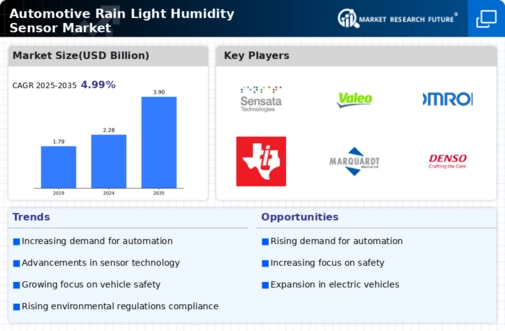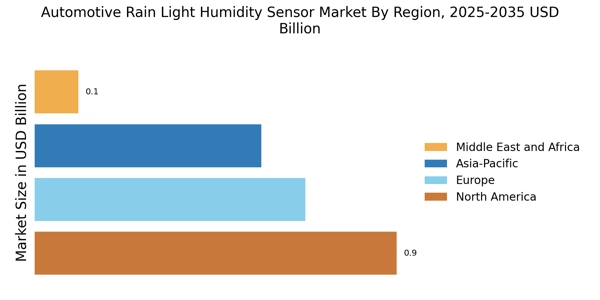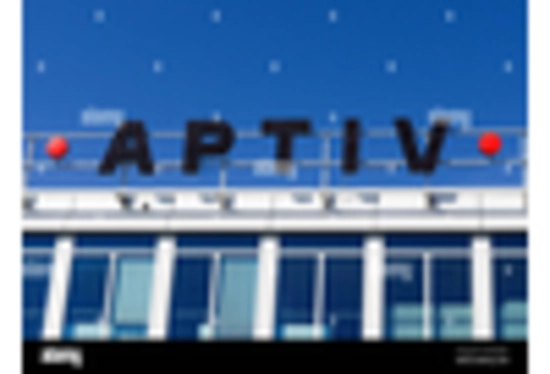The Automotive Rain Light Humidity Sensor Market is currently characterized by a dynamic competitive landscape, driven by technological advancements and increasing consumer demand for enhanced vehicle safety features. Key players such as Bosch (Germany), Denso (Japan), and Valeo (France) are at the forefront, each adopting distinct strategies to solidify their market positions. Bosch (Germany) emphasizes innovation through continuous investment in R&D, focusing on integrating advanced sensor technologies that enhance vehicle automation. Denso (Japan), on the other hand, appears to prioritize strategic partnerships with automotive manufacturers to ensure their sensors are embedded in next-generation vehicles, thereby expanding their market reach. Valeo (France) is actively pursuing digital transformation initiatives, leveraging data analytics to optimize sensor performance and improve user experience, which collectively shapes a competitive environment that is increasingly reliant on technological prowess and strategic collaborations.
In terms of business tactics, companies are localizing manufacturing to reduce costs and enhance supply chain efficiency. This approach is particularly evident in the moderately fragmented market structure, where the collective influence of key players like Aptiv (Ireland) and Hella (Germany) is notable. Aptiv (Ireland) has been optimizing its supply chain by investing in local production facilities, which not only mitigates risks associated with The Automotive Rain Light Humidity Sensor Market demands. This strategy, coupled with the competitive dynamics of the market, suggests a shift towards localized operations as a means of gaining a competitive edge.
In August 2025, Denso (Japan) announced a collaboration with a leading automotive manufacturer to develop next-generation rain sensors that utilize AI for predictive analytics. This strategic move is significant as it positions Denso at the cutting edge of sensor technology, potentially enhancing vehicle safety and performance through real-time data processing. The integration of AI into their product offerings may also serve to differentiate Denso in a crowded marketplace, appealing to manufacturers seeking advanced solutions.
In September 2025, Valeo (France) launched a new line of humidity sensors designed to improve the efficiency of climate control systems in vehicles. This initiative reflects Valeo's commitment to sustainability and energy efficiency, aligning with the growing consumer preference for environmentally friendly automotive technologies. By enhancing the functionality of their sensors, Valeo not only addresses current market demands but also sets a precedent for future innovations in the sector.
In October 2025, Bosch (Germany) unveiled a new sensor technology that integrates seamlessly with smart vehicle systems, enhancing the overall driving experience. This development underscores Bosch's focus on innovation and its ability to adapt to the evolving automotive landscape. By prioritizing smart technology integration, Bosch is likely to maintain its competitive advantage, appealing to manufacturers looking to incorporate cutting-edge features into their vehicles.
As of October 2025, the competitive trends in the Automotive Rain Light Humidity Sensor Market are increasingly defined by digitalization, sustainability, and the integration of AI technologies. Strategic alliances among key players are shaping the landscape, fostering innovation and enhancing product offerings. The shift from price-based competition to a focus on technological advancement and supply chain reliability is evident, suggesting that future competitive differentiation will hinge on the ability to innovate and respond to evolving consumer preferences.


















Leave a Comment